Buying Rowan & Whitebeam Trees Online:
Order Potted Rowan Trees Now For September Delivery
Pre-Order Bareroot Rowan & Whitebeam Trees For 2025/26 Winter Season
Rowan (aka Mountain Ash), and Whitebeam are members of the Sorbus family.
They are small to medium-sized, fast-growing native trees from 6-18 metres tall, very useful as avenue trees, and in smaller gardens as lawn features.
Rowans carry creamy flower heads in May/June, and graceful leaves that mature to a range of striking Autumn colours, along with attractive bunches of bright berries.
Whitebeam's best feature is its handsome leaves with their silvery-grey hairs on the underside that reflect the light and brighten up your garden.
What size Rowan / Whitebeam trees should I buy?
- If you are not in a hurry to get a full sized Rowan tree, we recommend starting with the smaller 6/8cm girth size.
- If you are in a hurry and need instant impact, then go for the 8/10cm girth size.
Standard trees are measured by their girth 1 metre above the ground, and young saplings are measured by height.
Therefore, a 6/8cm Standard Rowan tree is much bigger than an 60/80cm sapling Rowan tree. If a tree is available in both sizes, it will be noted in the product descriptions.
Mountain Ash (Sorbus) is no relation to Common Ash (Fraxinus), and is unaffected by Ash dieback disease.
Have a look at the rest of our range of ornamental trees.
- Order now, pay later: we don't charge your card until before delivery
- When your order is ready: your mail order trees are delivered by next working day courier (not the next working day after ordering!)
- Friendly support: if there is anything wrong with your plants when you inspect them, Contact Us within 5 working days
All bareroot plants are covered by our Refund Guarantee, so you can give them a whirl with complete confidence.
Which Sorbus Variety - Rowans & Whitebeams - Should I Choose?
Native Varieties (Best for Wildlife):
- Sorbus aucuparia, Native Rowan (and its named cultivars)
- Sorbus aria, Native Whitebeam (and its named cultivars)
- Sorbus torminalis, Chequer tree
Best for Eating:
- Sorbus aucuparia 'Edulis' (much better fruit for jelly etc than the wild species)
- Sorbus torminalis (small, vaguely date-like, perhaps the most 'exotic' native fruit)
Best for Small Gardens:
- Sorbus vilmorinii is almost a large shrub, rather than a small tree, up to 4 metres
- Sorbus commixta 'Embley' is smaller than most other Rowans, up to 7 metres
- Sorbus aria 'Lutescens' is probably too big for a really small garden, but at up to 15 metres, it is the smallest of the Whitebeams.
Where Can I Grow Rowan and Whitebeam?
Both species are very hardy and wind-resistant.
Growing Rowans:
Rowans will grow on the top of old brick walls, so they are not fussy about soil fertility! They demand plenty of sun, do not do well on chalk, and are not suitable for the coast.
A Rowan's favourite place to grow in the wild is beside a mountain stream: consistently moist but well drained at the same time.
They do not grow well on the coast.
Growing Whitebeam:
Whitebeam is more shade-tolerant, and will grow on chalk and the coast.
When and How do I plant Rowan / Whitebeam Trees?
You can plant Pot Grown Rowan & Whitebeam trees at any time of year, and Bareroot trees during winter, except when the soil is frozen.
Watch our Tree Planting Video for instructions.
Although optional, we strongly recommend using Rootgrow.
Aftercare:
Remember: the two biggest killers of recently transplanted trees are underwatering, and being choked by weeds and grass.
- Regular, thorough watering is vital during dry weather in their first spring and summer, and highly recommended the following summer, especially if there is a heat wave.
- Either remove weeds and grass by hand periodically, or use some form of mulch to suppress them.
Tree Planting Accessories
Standards that are 6/8cm in girth and upwards are quite big trees, so they need a tree planting stake and a tree tie (with a buffer between the tree and the stake) during their first couple of years.
A mulch mat is will suppress weeds & grass, and preserve moisture: remember that dry soil and competition with weeds are the two biggest killers of new trees.
Even with a mat, you should remove anything that manages to grow up between the mat and the trunk in late spring and summer.
You can buy those items separately, or save money with our Tree Planting Pack.
You definitely need a tree guard if there are deer or rabbits about.
In urban areas with no wild animals, tree guards are great for protecting against mowers and strimmers.
For that purpose, you can cut one tree guard into several pieces about 20-25cm long, to act as skirting around the base of the tree.
Mycorrhizal Fungi
We cannot recommend using Rootgrow fungi enough: it makes a huge difference, especially with larger trees, which are scrambling to regrow the root systems that they lost when we dug them up, in order to support their now top-heavy growth above ground.
Mycorrhizal fungi assist the roots in accessing soil nutrients and water, and protect the roots from soil critters.
In return, the tree shares sugar with them, and the result can be over 50% more growth above ground!




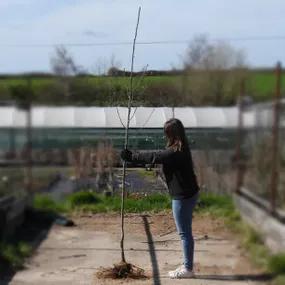
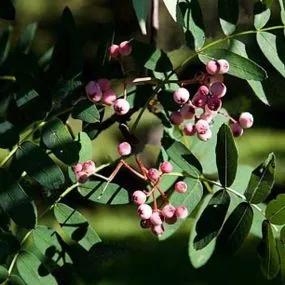

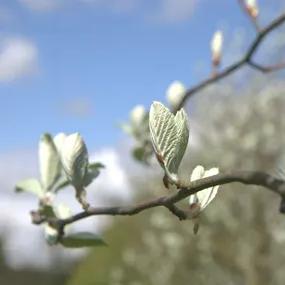
 3.webp)
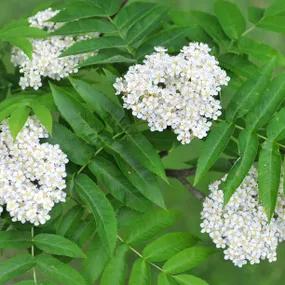
 1.webp)
 1.webp)
 1.webp)
 1.webp)
.webp)
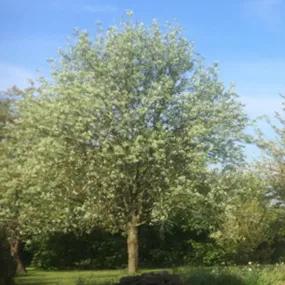
 3.webp)
